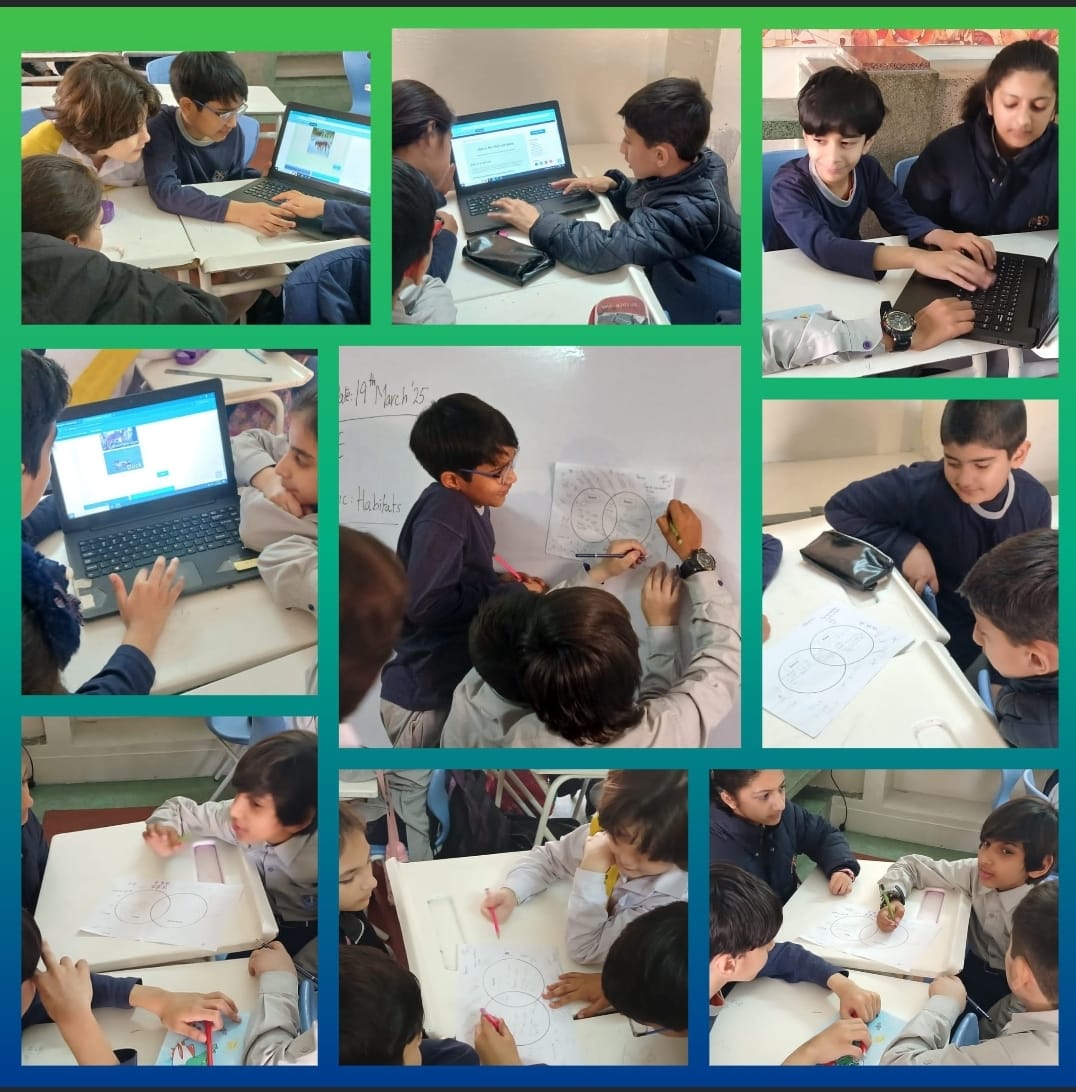A Walk Through Nature: Grade 3’s Habitat Discovery
At BCLR, we believe that learning comes alive when students are actively engaged in exploring and presenting their knowledge. Our recent Grade 3 activity on habitats was a perfect example of this approach, where students not only learned about different ecosystems but also showcased their understanding through a gallery walk.
Building the Foundation: Lesson Introduction
The session began with a structured lesson outline, where students were introduced to the concept of habitats and their significance in supporting various forms of life. The discussion highlighted key questions: What is a habitat? Why do different animals live in specific habitats?
![]() How do animals and plants adapt to their environments? Students explored a variety of habitats, including forests, oceans, deserts, and polar regions, learning about the characteristics that make each one unique. This set the stage for the interactive gallery walk that followed.
How do animals and plants adapt to their environments? Students explored a variety of habitats, including forests, oceans, deserts, and polar regions, learning about the characteristics that make each one unique. This set the stage for the interactive gallery walk that followed.
The Gallery Walk: A Showcase of Learning
After gaining a conceptual understanding, students took part in a gallery walk, where they moved around the classroom to observe and discuss different habitat displays prepared by their peers. Each group had worked on a specific habitat, using charts, models, drawings, and written descriptions to explain key features such as: Climate conditions of the habitat. Animals and plants found there. Unique adaptations for survival. As they walked through the gallery, students engaged in meaningful discussions, asked questions, and shared insights. This interactive format encouraged peer learning, as students not only presented their own work but also learned from the efforts of their classmates.
Why This Activity Was Effective
The gallery walk transformed the classroom into a learning exhibition, allowing students to actively participate rather than passively receive information. Through this process, they: Developed research and presentation skills. Practiced critical thinking by comparing habitats. Enhanced their communication skills by explaining their findings. Learned from one another in a collaborative environment. Additionally, this hands-on approach deepened their appreciation for biodiversity and the importance of conservation.
A Step Toward Experiential Learning
The enthusiasm and engagement displayed throughout the activity reinforced the power of interactive learning. At BCLR, we believe that when students are given the opportunity to observe, analyze, and present information in creative ways, their learning becomes more meaningful and long-lasting.
Through this habitat exploration and gallery walk, our Grade 3 students took a step beyond traditional learning, making education an experience to remember. We look forward to more dynamic and enriching activities that continue to inspire curiosity and discovery.
